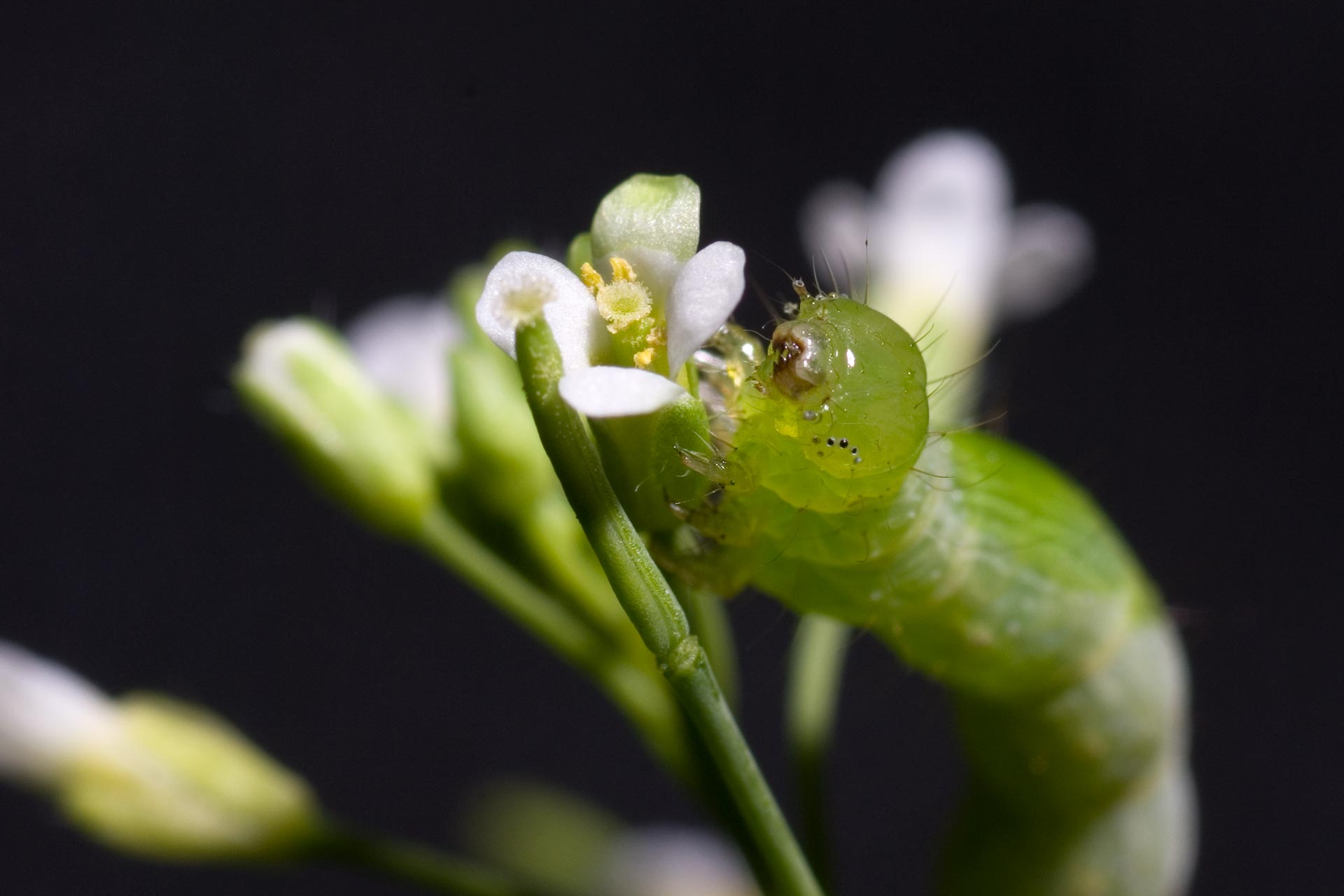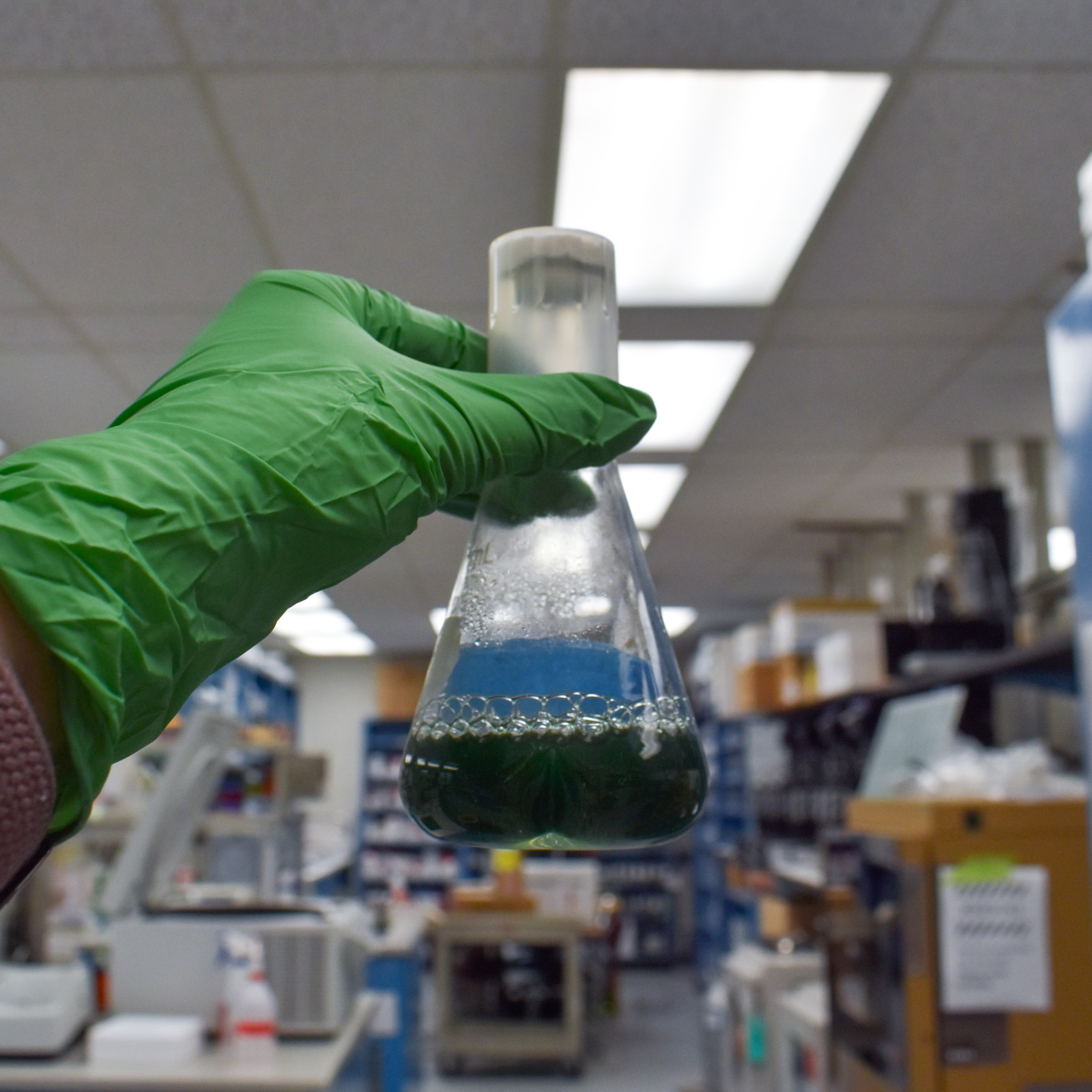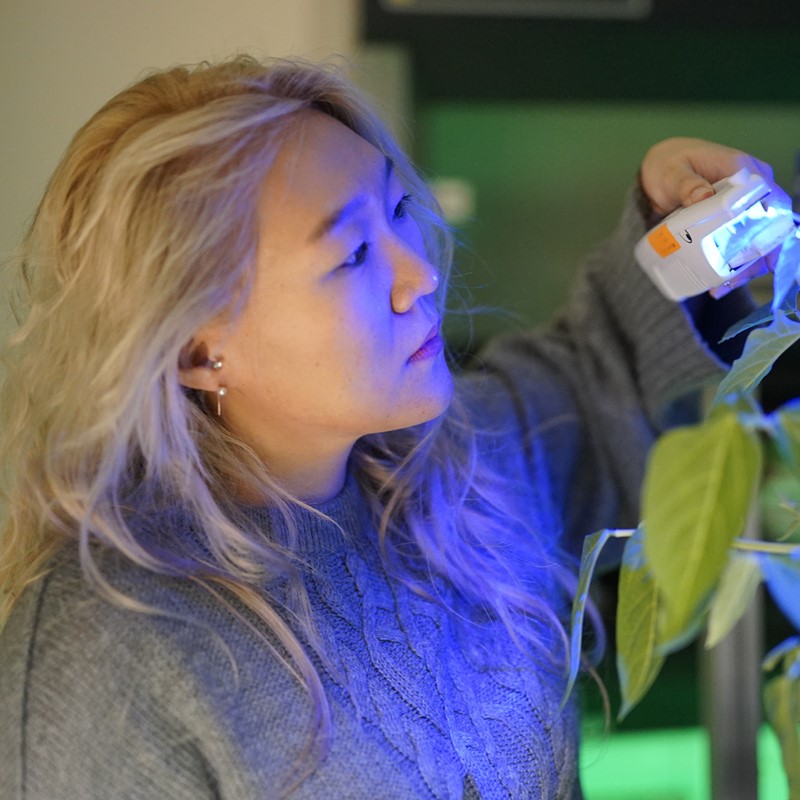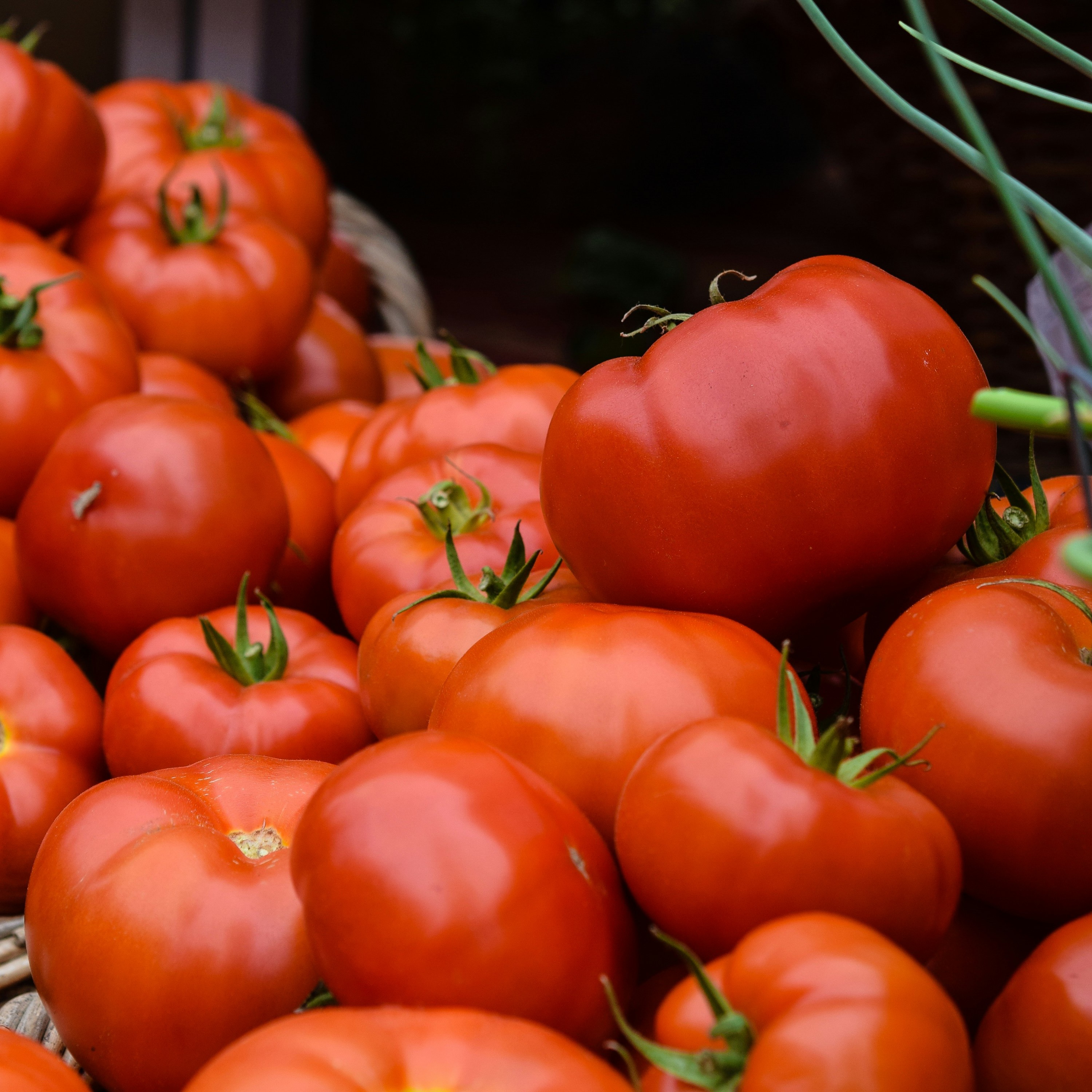A common metabolic currency tunes growth-defense balance in plants
When plants defend against a threat, their growth slows to a crawl. In their efforts to understand why, the Howe lab is constantly pushing the limits: how high can one tune plant defenses before a plant goes belly up?
Their new study, published in Plant Physiology (and featured on the journal's June 2020 issue cover), suggests a new metabolism-sensing mechanism that may mediate between growth and defense functions.
Plant defense is controlled in part by a collection of genes, called JAZ. When all is well, JAZs are the car brakes that keep defense mechanisms from speeding out of control. Once danger arises – say attack from hungry caterpillars – the JAZs are broken down, the brakes released. Plant defense responses are put into gear.
There is a catch. Plants in defense mode slow down their growth. To probe this mystery, the lab of Gregg Howe at the MSU-DOE Plant Research Laboratory has been gradually removing the genetic brakes from the model plant, Arabidopsis. There are 13 JAZ genes in Arabidopsis, and with each extra gene removed, the plants get smaller.
‘Seeing’ the light vs. defense mode
In 2016, the lab made a breakthrough towards understanding the defense vs growth dynamic.
“We grew a plant missing 5 of the 13 JAZ genes. It was better defended but smaller in size,” says Ian Major, a post-doc in the Howe lab. “We showed that its defense system conflicts with a light detection system. This light detection system receives cues – about neighboring plant competitors and other factors that affect surrounding light conditions – to control how plants grow and develop.”
When the team removed a key light detector – called Phytochrome B – growth and defense were no longer at odds.

By Kurt Stepnitz, © 2006 University Relations - Michigan State University
“Our plant recovered normal growth patterns and kept its strong defenses,” Ian says. “We found a sweet spot, a plant that defends and grows at the same time.”
Fast forward to 2020. The Howe lab has to date removed 10 of the 13 JAZ braking components. The result is a relatively healthy and well defended plant – albeit much smaller – called jazD.
“With fewer JAZ proteins left, jazD plants have stronger defenses. It is more resistant to caterpillars. It is also more resistant to some pathogens, which we didn’t see before,” Ian says. “When we remove the phytochrome B light detection system, jazD also retains a strong defense capability. “
“But, unlike what we saw in 2016, jazD does not recover its growth.”
A sensing mechanism that slows growth?
This new study reveals a potential sensing mechanism – other than light detection – that is integrated with the defense system.
One possibility is that the flood of extra defense compounds produced by jazD are taxing on metabolism. The concept itself is not new: defended plants restrict the flow of resources to growth so that the high-speed defense production doesn’t deplete its energy reserves.
“The new information about jazD plants show us is that plants might shape their metabolism towards making defenses,” Ian says. “One of these metabolic changes is higher levels of a key amino acid nutrient, tryptophan.”
“We see higher tryptophan levels before and after removing the light detection gene. This might be the clue linking growth and defense processes in Arabidopsis. We think the plant senses these metabolic changes to adjust growth accordingly.”
The sensing mechanism itself remains unknown. However, unpublished data on jazD has revealed other genetic mutations that actually improve its growth.
“Hopefully, one of these new genes will indicate how metabolism is sensed,” Ian adds. “Regardless, this study indicates that current models to explain how elevated defense inhibits plant growth need to be refined and further tested.”
This work was primarily funded by the US Department of Energy, Office of Basic Energy Sciences, with additional funding from the MSU Plant Resilience Institute and Michigan AgBioResearch.
By Igor Houwat, Ian Major; Banner image by Kurt Stepnitz, © 2006 University Relations - Michigan State University



